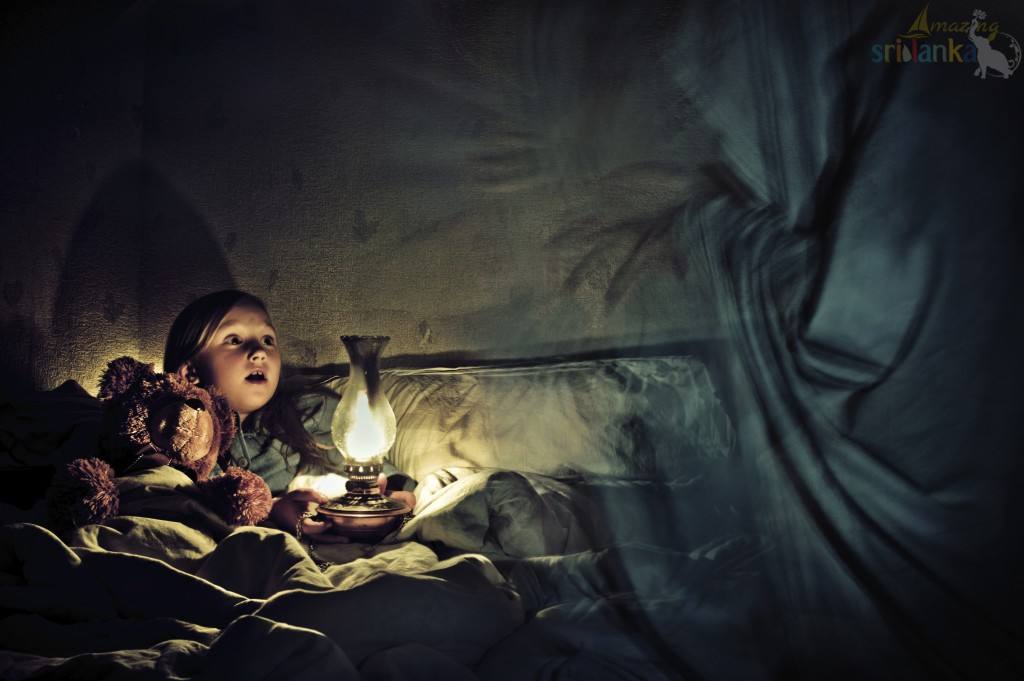A Mother’s Lamentation

Exploring Traditional Sinhalese Lullabies
By Ama H.Vanniarachchy
Most of us grew up listening to lullabies sung to us by our mothers, grandmothers, or aunts. These lullabies are not formally taught to us. We remember their tunes from our earliest times and then much later we learn the lyrics. They are passed down from generation to generation through memory.
The most famous lullaby we know in Sri Lanka is age-old, and the very melodious doi doi doi doiya baba lullaby. There is hardly anyone who grew up in Sri Lanka would not be knowing this heart touching beautiful tune. It has a magical effect that can make you fall asleep or calm your mind. This tune is able to take us back to our childhood or bring back memories of our mother’s warmth or memories of our cozy cradles.
But did you ever notice the lyrics of this lullaby?
Doi doi doi doiya baba
(Sleep baby)
Bai bai bai baiya baba
(Sleep baby)
numbe amma kothana giya
(Where did your mother go)
kiri aragena enna giya
(She went to bring milk)
Kiri muttiya gange giya
(The milk pot was drowned in the river)
ganata udin kokku giya
(Cranes flew over the river)
According to this lullaby, the one who is putting the child to sleep asks ‘where did your mother go?’, and then the reply is that the mother has gone to bring milk and that the milk pot was drowned in the river and cranes flew over the river. This means that the mother never returned with the milk, suggesting that she was drowned in the river.
We chose a second lullaby and that is;
Waniyan kalu waniya
(Relax or sleep Kalu (a pet name for the baby which means the ‘dark one’))
Rata bathata waniyan
(Relax or sleep till the dinner is served)
Numbe ammath kaluma kalui
(Your mother is pitch black)
Numbe thaththath kaluma kalui
(Your father is also pitch black)
Numba nalwana maatha kalui
(I who is putting you to sleep is also dark)
Numba witharak thala elalui
(But you are tan)
This again suggests that the lullaby is sung not by the mother, but by a caregiver. While putting the child to sleep and calming down the baby, she sings that the baby’s mother and father are pitch black and she too is dark, but the baby is not dark but tan.
In today’s sense, these are not things that one would tell a baby. But again, babies do not understand the lyrics. They only respond to the melodious tune and the humming, the soothing voice. This makes them feel relaxed and calm.
But then why these harsh lyrics?
What was the intention behind them?
Exploring a little bit about our lullabies, we came to know that lullabies from all around the world have similar characteristics. The lyrics are actually sinister and sometimes creepy too.
But why? Come, let us find out.
The oldest known lullaby
No one knows the exact date when the first lullaby was sung. However, what we know is that the practice of singing lullabies is age-old and happens all over the world, in every culture. According to psychologist Sandra Trehub, professor emeritus at the University of Toronto Mississauga, there seems to be evidence of singing to infants throughout recorded history.
As archaeo-musicologist Richard Dumbrill, a leading expert on ancient music with the British Museum in London says, the oldest lullaby is certainly when the first woman sang to her first child. He further says that lullabies belong to the instinctive nature of motherhood.
It is believed that the oldest known lullaby is from ancient Babylonia which is dating from around 2000 BC. This is etched into a small palm-sized clay tablet, written in cuneiform letters.
This oldest known lullaby is sung to a baby by the mother, and the baby is blamed for disturbing the house god with its crying and is threatened with repercussions.
Starting from this oldest lullaby, this feature continued to remain in almost all lullabies of the world to date.
To understand why lullabies have such sinister lyrics, we ought to understand why they were sung.
Harvard University evolutionary psychologist Max Krasnow and grad student Samuel Mehr published the first formal theory on the origins of lullabies in Evolution and Human Behavior last year and according to that, lullabies may have been the result of parents and infants clashing over a precious resource: parental attention.
As Krasnow explains, from a genetic perspective, parents and infants don’t have the same interests and infants want more of all resources than parents are willing to give. Mehr says that the parent-infant relationship of the past was not always a sweet thing, it had a lot of conflicts.
Therefore, Krasnow and Mehr believe that the tug of war between an attention-seeking infant and the tired and busy parent or caregiver may have set the stage for the birth of lullabies. The solution for this tug of war was parents’ vocalization. More and more crying of the infant would have been responded to with more and more complex vocalizations.
Shannon de l’Etoile, a professor of music therapy at the University of Miami’s Frost School of Music, explains a theory that lullabies evolved out of the need for ‘hands-free parenting’. As she explains, human babies who were born premature, unlike many other mammals, need an extended period of hands-on care by their parents. When it comes to a time when the baby is too big to be carried all the time and the mothers are busy with other work at the house, including tending to the other siblings, singing to the baby allowed the mother to keep the infant calm while she was busy with other work at the house.
It was also very important to keep the babies quiet at night unless it can attract predators, therefore, the mother effectively used her voice to calm the baby.
How healing can they be for the baby?
Research has shown that lullabies have a great soothing effect and possibly even help to heal an infant. A study published in the journal Pediatrics in April 2013 found that live lullabies slowed infant heart rate, improved sucking behaviors that are critical for feeding, increased periods of quiet alertness, and helped the babies sleep. Researchers found that they are a stress reliever for the parents too.
Sally Goddard Blythe, director of the Institute for Neuro-Physiological Psychology and an expert in early child development says in her book, The Genius of Natural Childhood, states that the mother’s voice ‘is particularly powerful because it resonates internally and externally, her body acting as the sounding board,’.
She further writes, ‘Both before and after birth, a mother’s voice provides a connection between respiration, sound and movement, an acoustic link from life and communication before birth, to the brave new world after birth’.
Blythe further says that the triple meter or the 6/8 time, that makes lullabies swing or a rocking motion, is soothing because it mimics the movement a baby experiences in the womb as a mother moves.
Colwyn Trevarthen, professor of child psychology at the University of Edinburgh and vice-president of the British Association for Early Childhood Education, research suggests that babies are innately musical, and have an excellent sense of rhythm. Therefore, even if the mother is not actually singing she is talking in a musical tone, with a rhythm the baby would respond to and it has healing effects on the baby.
It is the tune and tone that matters
Research suggests that the rhythm, tune, and tone of singing are far more important in lullabies than the meaning of the lyrics. This means the mother’s voice, tone, and the soothing tune is healing and is therapeutic for the baby. Many lullabies, regardless of the meaning of their words, possess a peaceful hypnotic quality. Even the mournful or dark, lamenting sort of ones have this hypotonic mesmerizing quality in them.
Are they therapeutic for the mother?
For these reasons, scholars believe that lullabies help a mother vocalize her worries and concerns. In short, they serve as therapy for the mother.
A mother and a child share a special bond, and this bond starts from the moment the child is conceived in the womb. This special bond is deeper during the first year of life, and the mother feels they can sing to the child about her fears and sorrows, in the safety and comfort of being physically together. During a time when infant death rates were high, it is natural that mothers felt the fear of losing their infants.
Therefore it is believed that lullabies are the space to sing the unsung and a place to say the unsayable.
Adding to this, Joanne Loewy, lead author of the April 2013 study in Pediatrics and director of the Louis Armstrong Center for Music and Medicine at Mount Sinai Beth Israel hospital in New York says that ‘lullabies embody a mother’s fear of loss as the first infant/toddler years of life are fragile’.
Universal emotions of mothers
Zoe Palmer is a musician working on a Lullabies Project at the Royal London Hospital. According to her, the many parents she works with from China, Bangladesh, India, Italy, Spain, France, and Eastern Europe, at the hospital sharing lullabies from these countries, are remarkably similar. The tunes, tones, and ways of singing lullabies across the globe are very similar and basic.
If one studies lullabies from all over the world, they can be seen as a mother’s worries, grievances, and lamentation which is a universal feeling. Post-pregnancy depression also must have made things worse for the young mothers. Mental health was not a concern during those times. The fathers went on hunting or were missing in the household, infant deaths were high, domestic abuse, and lack of facilities such as water, clothes, and medicine, must have made it really hard for these new mothers.
Why does the mother seem to be absent in lullabies?
Another trait in these lullabies is that the child seems to be alone in them and the mother, in most cases, is separated or not with the baby. The child or the helpless infant seems to be the sole character in the lullaby. One explanation could be that back in those days mothers died a lot during childbirth and aunts took care of the infants.
This can be reflected in the two Sinhalese lullabies we have chosen today. The mother seems to be dead in the first one and in the second one the mother is absent.
Folk artist and researcher Bess Lomax Hawes, in a 1974 published essay, writes that this ‘spatial isolation’ of the baby in lullabies is the culture that values independence and strength in children, by letting them defend themselves alone.
Sinhalese lullabies
Our lullabies are a part of our intangible cultural heritage. They store generations of observations, emotions, thoughts, and experiences. Hence preserving them is important. Also, in today’s times, we hardly hear Sri Lankan mothers sing traditional lullabies to their babies. Either they are records or they are modern lullabies. The problem is that as these above research results have shown, live singing lullabies have a powerful healing effect on the baby and strengthen the mother-baby bond further. They are therapeutic for the mother too.
It is also crucial to conduct research on these local lullabies and take measures to preserve them in print as well as digital versions.
Uncategorized, Ama H.Vanniarachchy, Lullabies, Sri Lankan culture, Sri Lankan folklore
